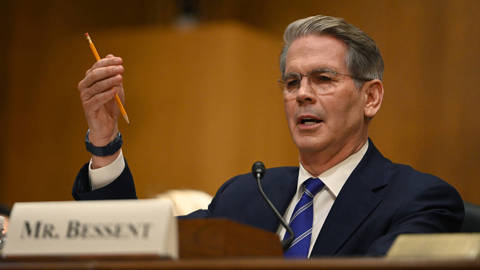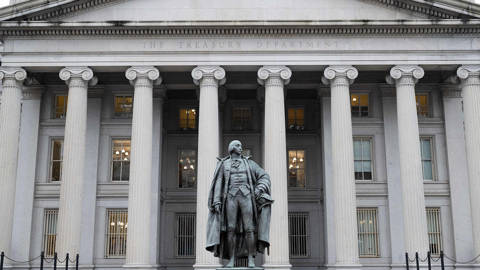The Post-Crisis Elephant in the Room
Thank you all for reading and commenting on my piece. I have tried to address your questions, grouping them by subject, with apologies for any that may be left unanswered.
Why unavoidable cognitive mistake?
This is a point that requires a paradigm shift from the mechanistic way we tend to think of the economy or the financial system. Yes, unavoidable, because when a fallible individual with imperfect understanding deals with a complex system he is bound to make unavoidable cognitive mistakes. Hopefully, others will make different mistakes and thus will be able to learn from one another and move forward. Technocracies are far worse, both in their convoluted decision making and in their inability to recognize and correct their own mistakes, for which they are not even held responsible. Admitting and correcting error is the only way individuals in markets survive. But it is a sure way in which technocrats and politicians do not. So, for technocracies, cognitive mistakes are unavoidable, squared.
What structural weaknesses?
The catalogue is long but in order of importance, risk-weighted assets are, in my analysis, not at the top. To me, by far the largest error is the wrong definition of insolvency even by presumed prudent regulators: “The solvency of a bank depends on whether the value of its assets, if held to maturity, is sufficient to meet its obligations to depositors and holders of other bank debt” (John Vickers, “Some Economics of Banking Reform” Dec, 2012). But since banks have to refinance their assets on markets daily, they ought to remain solvent on a mark-to-market basis, not on a vague held-to-maturity hypothesis. Moreover, the fuzzy and unworkable concept of “value if held to maturity” relies on estimates made by economic agents, bankers and regulators, that are bound to be even more biased than the market. Of course, the prices expressed by markets are always wrong, and that’s why they keep changing. And indeed, as Paul Samuelson quipped, “the stock market had predicted nine of the past five recessions,” but that might be precisely why we had only five recessions and a modicum of resilience.
A butterfly effect: an apparently small mistake in the regulator’s definition of bank solvency has triggered the biggest financial hurricane in 80 years. But this mistake has not yet been recognized and remains the reason why, still today, banks are asked to have as prudential minimum capital only about one annual standard deviation of the assets they own, while I have rarely seen unregulated hedge funds have less than four or five.
RWA are less of a problem. Broadly speaking, the standard risk-weighting scale was about right, assigning for instance to equities a weight of about 5 times that of AAA bonds. Where regulators failed miserably was in deciding how much capital to have against the RWA and, apparently, they simply assumed that what the banks already had must have been about right. But they forgot the banking crises of previous years, from LTCM to S&L and the Latin American crisis. Of course, there were many other issues with RWA, such as the use of lax internal models, the allowance for the benefits of diversification in prudential regulation, which is a clamorous fallacy of composition, etc. (More in my review of “Engineering the Financial Crisis” -
link: https://files.secureserver.net/1fBIrjs95fpAsF.)
Whose fault?
Some factors often indicated as structural weaknesses probably weren’t that crucial. Governance, for instance, was less of an issue than presumed. No bankers had more skin in the game than Dick Fuld at Lehman Brothers and James Cayne at Bear Stearns (link: https://papers.ssrn.com/sol3/papers.cfm?abstract_id=1439859). Yet due to the complexity of their own business and the pervasiveness of regulation BEFORE the crisis they were blind to the true risks on the balance sheet of their banks. Boards and managements have been running banks looking at a complicated dashboard of indicators and ratios mostly dictated by regulations and simply monitoring compliance with existing rules. And with an average of 200 regulatory changes or revisions per day now hitting the sector, don’t expect better managerial awareness going forward (link: http://image-src.bcg.com/BCG_COM/BCG-Staying-the-Course-in-Banking-Mar-2017_tcm9-146794.pdf).
Imagine driving a complicated bus on a road full of signposts: by the time you have seen them all you have missed the coming turn, particularly if you were allowed a speed of 400 mph and told it was a prudential limit. But it is possible to reverse engineer Basel ratios into a simplified intelligible risk equivalent portfolio that helps understand the true level of risks on banks’ books (link: http://docplayer.net/1810030-The-risk-on-banks-books.html).
So culprit number one remains the regulators, with the bankers, in my mind, only a distant second, despite all the wrongdoing that was uncovered afterwards but that had little to do with the crisis itself except as proof of lax oversight by the authorities for which nobody has been questioned. In fact, remarkably, I think not one dollar of the $321 billion levied in bank penalties after the crisis was for breaching any of the prudential rules that should have been designed to avoid the crisis they instead ended up precipitating. Did anyone think of fining any of the regulators?
What to do?
In fact, why not laissez faire? It was actually the New Deal policies, Keynesian ante litteram, that were first tried in the Thirties with the results MW notes. And given the dismal result of the Keynesian policies we also got in the last 10 years, being left with more public debt in every country but with only a modest recovery in sight, some doubts would be warranted.
Complexity again. The economists’ toolbox has been enriched with policies that can do a lot in the short term, like getting politicians re-elected and central bankers reappointed by postponing the inevitable reckoning of their previous mistakes. But there can’t be any confidence in estimating their medium- or long-term consequences, and the risk they turn out to be counterproductive is indeed high.
Ten years later, given the modest results so far, we can consider the alternative of having allowed the financial crisis to run its course, as used to happen in the 19th century before we learned how to tame the immediate consequences. We would have had a couple of terrible years. Banks as we know them would have disappeared (it has happened to other industries before), and their regulators with them. Not too bad, since in every single line of business pursued by banks newer, less risky and more efficient intermediaries have emerged over the past decades, despite all the ongoing efforts of banks and regulators to stymie them.
We would probably by now have proper financial markets instead of the continuing shallow and oligopolistic OTC trading domains of a handful of investment banks. And a variety of intermediaries rather than the dangerously few role models regulators want to impose the world over. And, while we wouldn’t probably have to discuss inequality as much, governments, in our much richer societies than in the 19th century, would still have had the resources to mitigate the effects of the downturn on the weakest among us. Low prices, rather than prices artificially supported by experimental monetary policy, would have sprung animal spirits into action and ten years later the crisis would be forgotten and the financial system radically improved.
After all we were living in the strongest economic period of human history with some 3 billion people being elevated out of misery to the ranks of global consumers. So, when lamenting secular stagnation and excess savings, we should first consider the policies that most likely brought this upon us by blocking creative destruction and amassing unprecedented compulsory savings in the hands of governments in the form of Sovereign Wealth Funds and Foreign Exchange Reserves that topped $18 trillion.
Here are a few preliminary suggestions for a different financial architecture compatible with complexity. Competition, not regulation, is the solution to cognitive limits and fallibility. Simplification helps. History is a necessary and great guide. We must change the paradigm for financial stability: from the protection of intermediaries’ static stability to the preservation of markets’ dynamic functionality. Some key interacting variables when dealing with complex systems:
- Agents’ degrees of freedom and responsibility (the importance of failure and diversity);
- Agents’ incentives (moral hazards, game theory, behavioral economics, etc.);
- Marginal returns’ nature (beware increasing marginal returns); and
- Network architecture of agents’ connections (beware hub & spoke).












